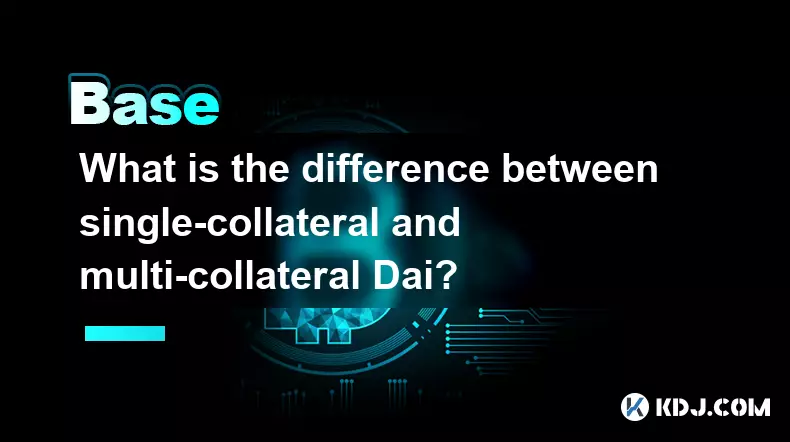-
 bitcoin
bitcoin $114684.631706 USD
-0.87% -
 ethereum
ethereum $4228.677447 USD
1.58% -
 bnb
bnb $1294.880693 USD
-1.16% -
 tether
tether $1.000819 USD
-0.02% -
 xrp
xrp $2.605138 USD
2.79% -
 solana
solana $209.908690 USD
5.89% -
 usd-coin
usd-coin $0.999903 USD
-0.03% -
 dogecoin
dogecoin $0.213423 USD
2.93% -
 tron
tron $0.322721 USD
-0.10% -
 cardano
cardano $0.727247 USD
3.66% -
 hyperliquid
hyperliquid $42.339456 USD
6.05% -
 chainlink
chainlink $19.910811 USD
5.16% -
 ethena-usde
ethena-usde $1.000557 USD
0.00% -
 stellar
stellar $0.349734 USD
2.69% -
 bitcoin-cash
bitcoin-cash $543.848687 USD
-0.21%
Can you reuse a crypto wallet address?
Reusing a crypto wallet address is possible but reduces privacy and increases security risks; best practice is to generate a new address for each transaction.
Aug 08, 2025 at 03:49 pm

Understanding Wallet Addresses in Cryptocurrency
A crypto wallet address is a unique identifier used to send and receive digital assets on a blockchain network. Each address is derived from a public key, which itself is generated from a private key. The address typically appears as a long string of alphanumeric characters and is specific to a particular blockchain—Bitcoin addresses differ from Ethereum addresses, for example. When someone sends cryptocurrency, they direct it to this address. The blockchain ledger records every transaction associated with that address, making it publicly traceable. It is essential to understand that while the address is public, the identity behind it remains pseudonymous unless linked to real-world information.
Is It Technically Possible to Reuse a Crypto Wallet Address?
Yes, reusing a crypto wallet address is technically possible. Most blockchain protocols do not prevent the reuse of addresses. You can receive funds multiple times at the same address without encountering technical errors. For example, if you share your Bitcoin address with a friend today and receive BTC, you can share the same address tomorrow and receive more. The blockchain treats each transaction independently, so there is no restriction on how many times an address can be credited. However, this does not mean it is recommended. The ability to reuse an address is built into the system, but privacy and security concerns have led experts to advise against doing so.
Privacy Implications of Reusing a Wallet Address
One major concern with reusing a crypto wallet address is the reduction of financial privacy. Blockchains are transparent ledgers, meaning every transaction linked to an address is visible to anyone. When you reuse an address, all incoming and outgoing transactions are tied to that single identifier. This creates a transaction history that can be analyzed to infer your total balance, spending habits, and potentially even your identity. For instance, if one transaction links your address to a known exchange or service, an observer could trace other transactions back to you. This undermines the pseudonymous nature of cryptocurrency and makes you more vulnerable to targeted attacks or surveillance.
Security Risks Associated with Address Reuse
While reusing an address does not directly expose your private key, it increases security risks through indirect means. When an address is reused, it becomes a more attractive target for attackers. If a hacker identifies that an address holds significant funds or is frequently used, they may attempt phishing, social engineering, or malware attacks to compromise the associated wallet. Furthermore, if the wallet uses older cryptographic standards or has been exposed in a data breach, repeated use amplifies the risk. Some wallets generate new addresses for each transaction (known as hierarchical deterministic or HD wallets), enhancing security by limiting exposure. Reusing an address bypasses these built-in protections.
Best Practices for Managing Wallet Addresses
To maintain privacy and security, users should adopt best practices when handling wallet addresses. Instead of reusing an address, generate a new one for each transaction. Most modern wallets support this automatically. For example, in a Bitcoin Core wallet, you can follow these steps:
- Open the wallet application
- Navigate to the 'Receive' section
- Click 'Generate New Address'
- Share the newly created address with the sender
- Repeat this process for every new transaction
Similarly, in MetaMask (used for Ethereum and ERC-20 tokens):
- Click the 'Account' dropdown
- Select 'Create Account' if managing multiple addresses
- Or, simply use the 'Receive' button, which displays the current address
- After receiving funds, use the 'Create New Account' option for future transactions
These steps ensure that each transaction is isolated, reducing the ability of third parties to link activities. Wallets that support BIP44 or BIP32 standards are designed to manage multiple addresses seamlessly.
When Might Address Reuse Be Acceptable?
There are limited scenarios where reusing a crypto wallet address may be considered acceptable. For example, if you are running a public donation campaign and want to maintain a consistent receiving address for transparency, reuse might be justified. In such cases, the trade-off between traceability and openness is intentional. Another example is when using a cold storage wallet that is completely offline and used only for long-term holding. If no outgoing transactions are ever made from that address, the risk of pattern analysis is minimized. However, even in these cases, it is safer to publish a new address periodically and update links or QR codes accordingly.
Frequently Asked Questions
Can reusing a wallet address lead to fund loss?Reusing an address does not directly cause fund loss, as the private key remains secure if properly protected. However, increased visibility can make you a target for scams or phishing attempts. If attackers gather enough information about your transaction patterns, they may trick you into revealing your seed phrase or sending funds to a fraudulent address.
Do all wallets allow address reuse?Yes, all wallets technically allow address reuse because the blockchain does not prohibit it. However, many modern wallets discourage it by automatically generating new addresses for each receive action. You can manually reuse an old address if you choose, but the interface may not make it easy.
Is it safe to reuse a wallet address for receiving from an exchange?Exchanges often allow you to reuse deposit addresses for convenience. While this is generally safe from a technical standpoint, it links your exchange activity to your on-chain history. For better privacy, consider using a new address each time or routing funds through a non-custodial wallet first.
What happens if I send crypto to an old, unused address from the same wallet?If the address was generated by your wallet and you still control the private key, the funds will be received successfully. Wallets that support address derivation (like HD wallets) can scan the blockchain and recognize incoming transactions to any of their generated addresses, even if they are not actively displayed.
Disclaimer:info@kdj.com
The information provided is not trading advice. kdj.com does not assume any responsibility for any investments made based on the information provided in this article. Cryptocurrencies are highly volatile and it is highly recommended that you invest with caution after thorough research!
If you believe that the content used on this website infringes your copyright, please contact us immediately (info@kdj.com) and we will delete it promptly.
- XRP Price Prediction: Weekend Rollercoaster or Rally?
- 2025-10-12 08:45:16
- Bittensor (TAO): Super Bullish Signals Point to Potential 2x Rally
- 2025-10-11 10:25:12
- Silver Price Correction: Navigating the Dip & Identifying Key SEO Keywords
- 2025-10-11 10:25:12
- Decoding Crypto Trends: Bittensor's Bull Run, Cardano's Dip, and LivLive's Presale Buzz in 'Uptober 2025'
- 2025-10-12 08:45:16
- MoonBull: The Crypto Meme Coin Promising 1000x Gains?
- 2025-10-11 10:30:01
- Crypto Payroll Revolution: Stablecoins, Altcoins, and the Future of Salary Payments
- 2025-10-11 10:30:01
Related knowledge

What does it mean for code to be "open source" in crypto?
Oct 12,2025 at 01:54pm
Understanding Open Source in the Cryptocurrency Ecosystem1. In the context of cryptocurrency, open source refers to software whose code is publicly ac...

What is the purpose of a "testnet"?
Oct 12,2025 at 09:01am
Understanding the Role of Testnets in Blockchain Development1. A testnet serves as a parallel version of a blockchain network, designed specifically f...

How to avoid phishing scams in crypto?
Oct 13,2025 at 06:18pm
Understanding Common Crypto Phishing Tactics1. Cybercriminals frequently use fake websites that mirror legitimate crypto exchanges or wallet platforms...

What is the difference between single-collateral and multi-collateral Dai?
Oct 12,2025 at 05:18pm
Understanding Single-Collateral Dai1. Single-Collateral Dai (SCD) was the original version of the Dai stablecoin launched by MakerDAO in 2017. It allo...

What is a "sidechain"?
Oct 13,2025 at 02:36pm
Understanding the Concept of Sidechains1. A sidechain is a blockchain that operates independently but is connected to another blockchain, known as the...

What is "EIP-1559" and how did it change Ethereum?
Oct 12,2025 at 03:00am
Understanding EIP-1559 and Its Core Mechanism1. EIP-1559 is a protocol upgrade introduced to the Ethereum blockchain as part of the London hard fork i...

What does it mean for code to be "open source" in crypto?
Oct 12,2025 at 01:54pm
Understanding Open Source in the Cryptocurrency Ecosystem1. In the context of cryptocurrency, open source refers to software whose code is publicly ac...

What is the purpose of a "testnet"?
Oct 12,2025 at 09:01am
Understanding the Role of Testnets in Blockchain Development1. A testnet serves as a parallel version of a blockchain network, designed specifically f...

How to avoid phishing scams in crypto?
Oct 13,2025 at 06:18pm
Understanding Common Crypto Phishing Tactics1. Cybercriminals frequently use fake websites that mirror legitimate crypto exchanges or wallet platforms...

What is the difference between single-collateral and multi-collateral Dai?
Oct 12,2025 at 05:18pm
Understanding Single-Collateral Dai1. Single-Collateral Dai (SCD) was the original version of the Dai stablecoin launched by MakerDAO in 2017. It allo...

What is a "sidechain"?
Oct 13,2025 at 02:36pm
Understanding the Concept of Sidechains1. A sidechain is a blockchain that operates independently but is connected to another blockchain, known as the...

What is "EIP-1559" and how did it change Ethereum?
Oct 12,2025 at 03:00am
Understanding EIP-1559 and Its Core Mechanism1. EIP-1559 is a protocol upgrade introduced to the Ethereum blockchain as part of the London hard fork i...
See all articles










































































